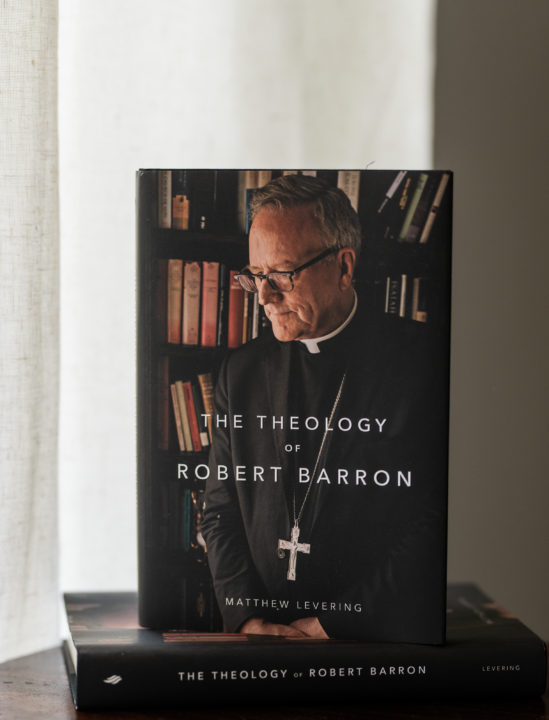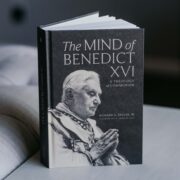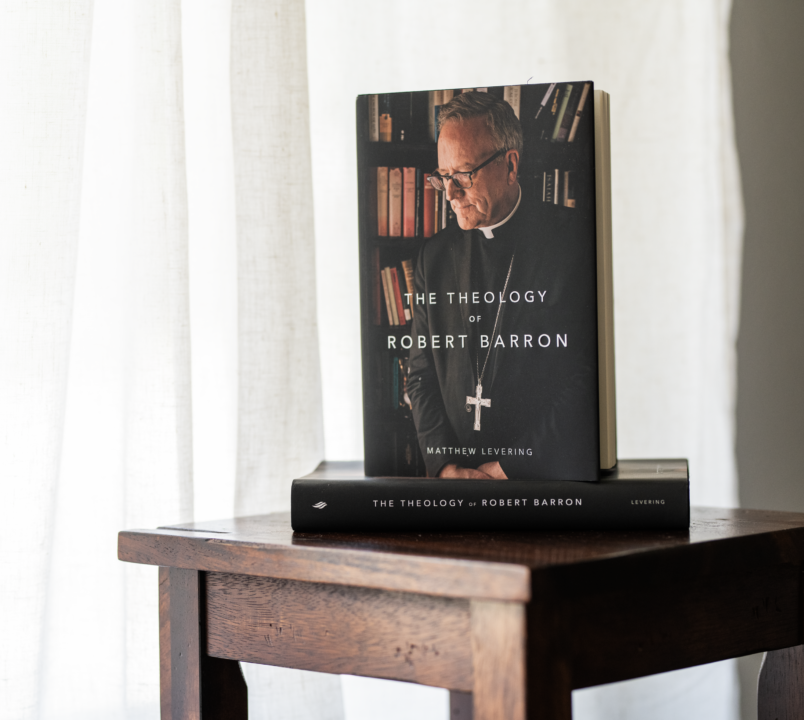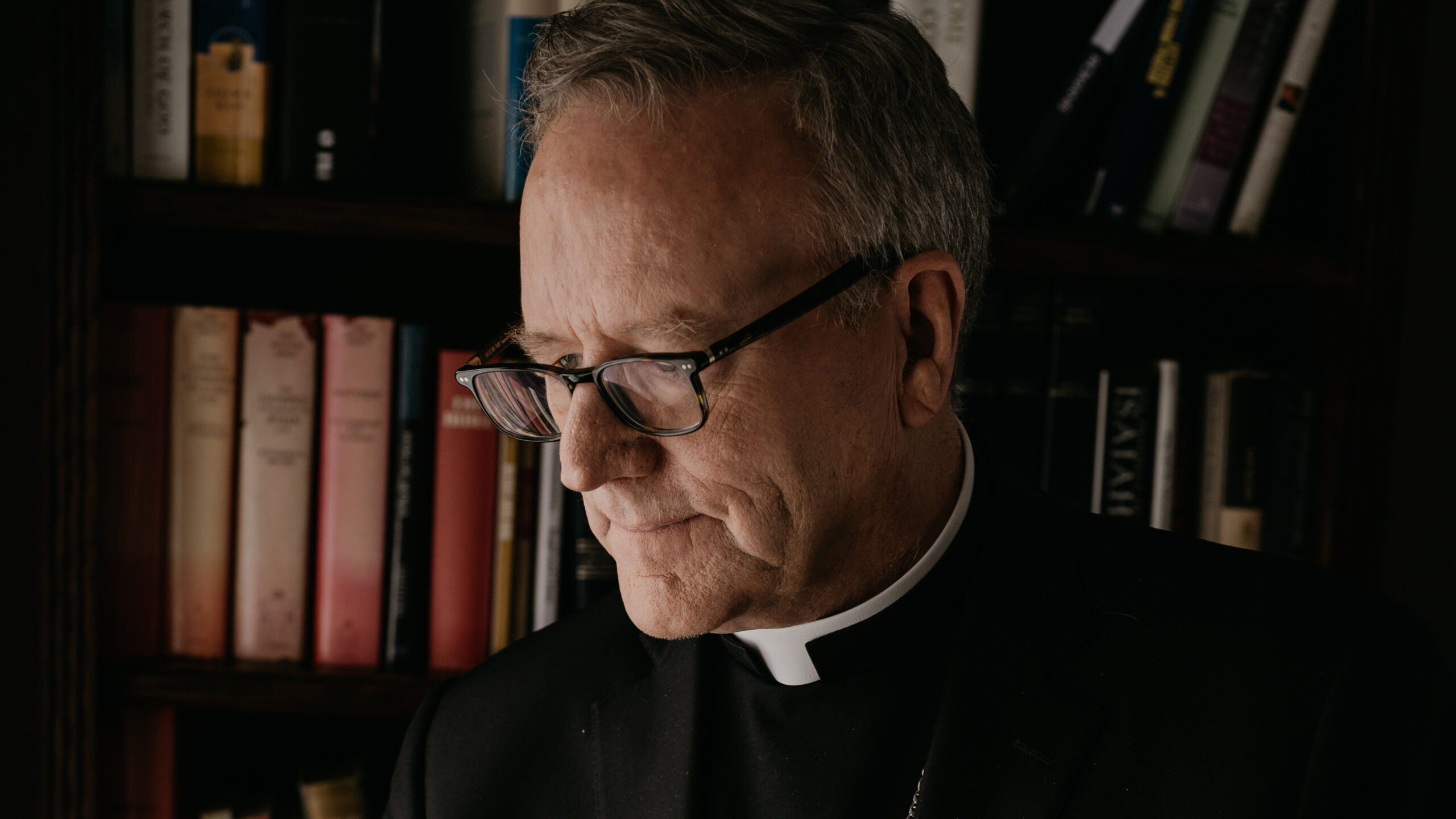
In his new book, The Theology of Robert Barron (Word on Fire Publishing), Matthew Levering explores the key themes and sources of Bishop Barron’s theological vision, tracing the development of his thought from his years as a student in the 1970s and 80s to the present. He shows how Barron integrates speculative, moral, and spiritual dimensions into a theological picture that, while deeply Catholic, is also oriented to the world outside the Church.
The following is an excerpt highlighting the section of the book’s introduction titled “Barron’s Background.”
In lectures delivered in 1983 at Oxford University’s Campion Hall, the great Jesuit theologian Avery Dulles argued that “each major era of Church history has a special task or vocation. By living out the integral Christian reality in its own way, it makes a distinct contribution to the ongoing tradition.” Although Dulles had major eras such as the patristic era or the medieval era in view, his point can be extended to include the distinctive contributions made by every epoch in the Church’s life. Commenting on Dulles’ lectures (later published as The Catholicity of the Church), Lawrence Welch remarks that for Dulles the “communion between different generations of the Church is marked by a real ‘communion in difference’ as each generation has its own distinctive character that complements what earlier generations have initiated.”
I think Barron’s theological contributions can be grasped both in terms of his distinctive era and in terms of his distinctive generation. His is the first post–Vatican II generation, since he was only six years old when the Council completed its work. Given Vatican II’s evident importance for the Church today, Barron therefore reflects a notable theological era. Likewise, although not a member of the so-called “John Paul II generation,” whose members he taught while at Mundelein Seminary, he was surely influenced by Pope John Paul II’s reception of the Council, which began in 1978, the year after Barron graduated from high school. Barron’s seminary training, doctoral work, and more than half of his academic teaching career coincided with the years of John Paul II’s pontificate. Barron was still in his teens when the pontificate began, and he was forty-five when it ended.
John Paul II’s pontificate was organized around the effort, begun by Pope Paul VI, to undertake a new evangelization of the post-Christian world. Thus, Barron’s commitment to evangelization resonates strongly with John Paul II’s pontificate. Barron also found in John Paul II’s vision an answer to the postconciliar polarization between Liberal Catholics, who advocated for the “spirit” of the Second Vatican Council but often rejected its “letter,” and Traditionalist Catholics, who blamed the Council itself for the difficulties faced by the postconciliar Church.
Firmly grounded in the documents of Vatican II, Barron’s theological outlook is marked by the same sort of overlap of “new” and “old” that one finds in the Polish pope. As is well known, Pope John Paul II took advantage of a wide array of sources and methods. He was trained in phenomenology, and he was a close friend of members of the Ressourcement school. He was also trained in Thomism and was indebted to scholastic insights and methods. Embodying this combination of “new” and “old,” John Paul II was well positioned to appreciate that the Church lives in history and must make the Gospel of Jesus Christ present anew in every era, in continuity with earlier eras.
Like John Paul II, Barron owes intellectual debts to a wide variety of philosophers, theologians, saints, and artists, seamlessly combining the “new” and the “old.” As we will see, Barron’s doctrine of God is Thomistic but also informed by the distinctive emphases of the Ressourcement movement. His reading of Scripture and his understanding of Christ are governed by a Catholic sensibility that pushes past historical-critical boundaries, in accordance with the creedal “rule of faith” that was so important to Irenaeus. His engagement with postliberal Protestant thinkers like George Lindbeck and Stanley Hauerwas, along with his interest in the thought of John Henry Newman, provides much of the grounding of his thought on tradition and life in Christ. His integration into his theology of Catholic literary giants such as Flannery O’Connor and Dante and saints such as Thérèse of Lisieux and Edith Stein, and his fulsome appreciation of Christian art and architecture, give his theology a cultural and spiritual spaciousness. His reading of Thomas Merton, whose work is informed by the classical monastic tradition, ensures that his theology stays close to the impulses and intuitions of Catholic spiritual life. His admiration for Dorothy Day’s concrete practice of the works of mercy has a similar effect. His time at the Catholic University of America in the early 1980s, where he earned a master’s degree in philosophy, exposed him to Thomistic philosophy and to phenomenology through the eminent priest-philosophers John Wippel and Robert Sokolowski. Recalling this period of his life, Barron says gratefully that it transformed his ability to think, giving him “not simply new ideas and information, but new eyes and a new mind.”

Theologically, his training as a seminarian was generally Rahnerian, as was then the norm. Describing his education at Mundelein Seminary (he was ordained by Joseph Cardinal Bernardin of Chicago in 1986), he states, “The contemporary theologian who had the greatest impact on my thinking was Karl Rahner. By the time I finished my four years in the seminary, I had read through most of Rahner’s major texts, and I had composed my STL dissertation on Rahner’s interpretation of the Christology of the Council of Chalcedon.” For Rahner, as Barron says, “universal human experience was consistently constructed as the starting point and interpretive matrix for doctrine.”
By contrast, as Thomas Baima has observed with Barron’s mature theology in view, “The post-liberal move is to locate authority in the person and event of Jesus, accessible to us through the greatest meta-narrative ever told, and within a community which reads that narrative contextualized by their doxology.” Such a perspective first became available to the young Barron at the Institut Catholique de Paris through the person of his doctoral advisor, Michel Corbin, a Jesuit theologian and disciple of Henri de Lubac. Unlike Barron, Corbin was a critic of Aquinas. He considered that, in comparison to the Church Fathers and monastic medieval thinkers such as Bernard of Clairvaux and Anselm, Aquinas lacked sufficient “scriptural density, unambiguous Christocentrism, and spiritual power.” Nevertheless, Corbin also taught Barron “to read Thomas Aquinas as a spiritual master,” as Barron says on the dedication page of his first post-dissertation book, Thomas Aquinas: Spiritual Master.
At a Parisian bookstore, the young Barron purchased Hans Urs von Balthasar’s Mysterium Paschale in its French translation. As Barron recalls in his essay “How von Balthasar Changed My Mind,” he discovered that “the method employed [by Balthasar] was radically other than the [Rahnerian] one to which I had become accustomed.” Balthasar’s method begins with the inbreaking of God in Christ to accomplish the radical fulfillment of God’s covenants and promises to Israel, whereas Rahner’s begins with the universal human experience of self-transcendence in the presence of Absolute Mystery.
After returning from Paris and beginning his teaching career, Barron set to work developing an alternative to Liberalism and Traditionalism. In popular lectures and essays, he rejected each side’s standard attacks on the other and urged that both sides focus upon the strangeness of the Incarnation—God’s simultaneous radical immanence and radical transcendence. In these early writings, Barron insists that neither Traditionalist restorationism nor Liberal revisionism lives up to the challenge brought by Christ (and by the Council). He bemoans “beige Catholicism,” or “balloons-and-banners Catholicism,” for dumbing down the Catholic faith and for the resulting failure of catechesis both at the parish level and in Catholic colleges and universities. Barron argues that cultural accommodation has turned Catholicism on all sides into something far more bland and non-threatening than it should be. The solution, Barron suggests, is to rediscover the radical Gospel of transformative commitment to the “troublesome, fascinating, and culture-transforming person of Jesus Christ.”
In his writings over the past three decades, Barron has worked out this postliberal theological project. His writings exhibit a constructive and critical dialogue with the preeminent theologians, biblical scholars, and philosophers of his era. I will highlight this dialogic dimension of Barron’s thought throughout the present book. Each chapter will begin with a lengthy discussion of a figure or figures who reflect the intellectual currents of the years in which Barron’s theology was developing. In Barron’s hands, these dialogues have borne fruit in a theology that directly engages the main areas in which the postconciliar Church needs strengthening, thus highlighting the profound relevance and vitality of Barron’s theology.
Read more and get your own copy of Matthew Levering’s The Theology of Robert Barron (Word on Fire Publishing) in the Word on Fire Bookstore now.

